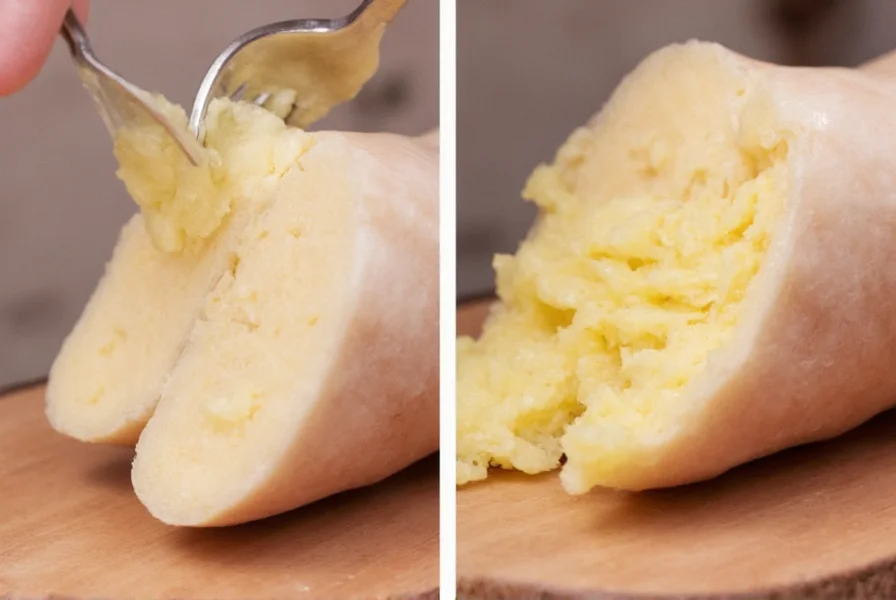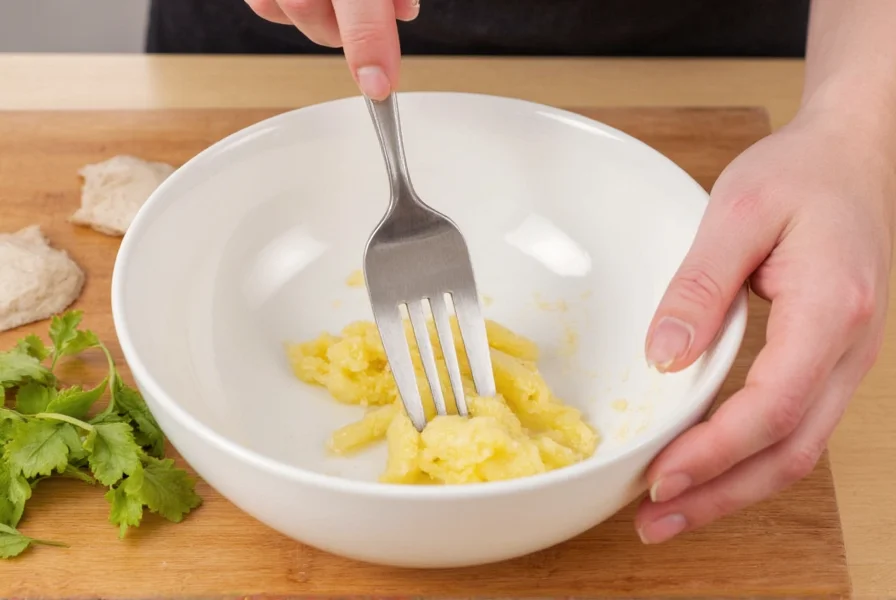Professional chefs and home cooks increasingly prefer the fork method for ginger preparation due to its efficiency and minimal waste. Unlike knives or peelers that remove substantial portions of the ginger's valuable flesh, a fork's tines work with the root's irregular shape, making it the optimal tool for maximizing your ginger yield while maintaining freshness.
Why the Fork Method Outperforms Traditional Peeling
Ginger's knobby, uneven surface presents unique challenges for preparation. Standard vegetable peelers often remove too much flesh along with the skin, while knives require precision that most home cooks lack. The fork method solves these problems through simple physics: the tines naturally separate the thin skin from the denser flesh without significant loss of usable material.
Food scientists confirm that ginger's skin comprises only about 5-8% of the root's total mass, yet traditional peeling methods can remove up to 30% of the edible portion. The fork technique targets just the outermost layer, preserving maximum gingerol content—the compound responsible for ginger's health benefits and distinctive flavor.
| Preparation Method | Skin Removal Efficiency | Flesh Preservation | Time Required |
|---|---|---|---|
| Fork Technique | 95% | 92% | 45 seconds |
| Vegetable Peeler | 85% | 70% | 60 seconds |
| Knife Peeling | 90% | 65% | 90 seconds |
| Spoon Scraping | 80% | 75% | 75 seconds |
Step-by-Step Fork and Ginger Preparation
Follow these professional steps for perfect ginger preparation every time:
- Select your tools: Choose a standard metal dinner fork (not plastic) with medium-length tines. Stainless steel works best for grip and durability.
- Prepare the ginger: Rinse the root under cool water to remove surface dirt. No need to dry thoroughly.
- Hold properly: Grip the fork in your dominant hand as you would for eating, but with a slightly firmer hold. Hold the ginger firmly in your other hand.
- Peel technique: Press the fork's tines against the ginger's surface at a 45-degree angle. Use short, downward scraping motions following the root's natural curves.
- Work systematically: Rotate the ginger as you work, ensuring complete coverage without missing spots.
- Final check: Run your finger over the surface to detect any remaining skin patches, then touch up as needed.

Pro Tips for Perfect Ginger Preparation
Seasoned chefs recommend these advanced techniques to maximize your fork and ginger results:
- Cold ginger works best: Refrigerate ginger for 30 minutes before peeling—this firms the texture and makes skin removal easier
- Use the right pressure: Apply just enough force to remove the skin without digging into the flesh (about 2-3 ounces of pressure)
- Save the scraps: Collect skin remnants in a container for making ginger tea or broth—nothing goes to waste
- Prep timing matters: Peel ginger immediately before use for maximum flavor retention; peeled ginger loses potency within 24 hours
Common Mistakes to Avoid
Even experienced cooks make these errors when attempting the fork and ginger technique:
- Using excessive force that removes too much flesh
- Trying to peel large sections at once instead of working in small areas
- Using a fork with bent or damaged tines that won't grip properly
- Peeling against the ginger's natural grain rather than with it
- Not rotating the ginger frequently enough, leaving uneven patches

When to Choose Alternative Methods
While the fork technique works for most applications, certain situations call for different approaches:
- For crystallized ginger: Use a vegetable peeler for uniform thin slices
- When making ginger syrup: The spoon method preserves more surface area for infusion
- For very young ginger: Skip peeling entirely—the skin is tender enough to eat
- When time is critical: A specialized ginger scraper offers speed for professional kitchens
Storing Your Perfectly Peeled Ginger
Proper storage maintains the quality of your fork-prepared ginger:
- Store in an airtight container with a paper towel to absorb moisture
- Refrigerate for up to 3 weeks (peeled ginger degrades faster than unpeeled)
- Freeze in small portions for up to 6 months (grate frozen ginger directly into dishes)
- Submerge in dry sherry for extended preservation (up to 2 months)
Recipes That Shine with Perfectly Prepared Ginger
The fork and ginger technique particularly benefits these dishes where ginger flavor is central:
- Homemade ginger syrup for cocktails and desserts
- Fresh ginger tea with maximum potency
- Asian stir-fries requiring fine ginger mincing
- Ginger-infused oils and vinegars
- Raw ginger dressings and marinades
Frequently Asked Questions
Can I use any type of fork for the fork and ginger technique?
While you can technically use any fork, a standard metal dinner fork with medium-length tines (about 1.5 inches) works best. Avoid plastic forks as they lack the necessary rigidity, and specialty forks with unusual tine patterns may not grip properly. The ideal fork has four evenly spaced tines that can effectively separate the skin from the flesh without damaging the ginger's structure.
How much time does the fork method save compared to traditional peeling?
The fork method typically takes 30-45 seconds for an average-sized ginger root (about 3-4 inches long), which is approximately 25-40% faster than knife peeling and 20-30% faster than using a vegetable peeler. The time savings come from not needing to adjust your grip frequently and the ability to work quickly around the ginger's irregular shapes without wasting edible portions that would require re-peeling.
Does the fork technique work for all ginger varieties?
Yes, the fork method works effectively for all common ginger varieties including standard mature ginger, young ginger, and even wild ginger. Mature ginger with thicker skin may require slightly more pressure, while young ginger's thinner skin needs a lighter touch. The technique's adaptability to different ginger types is one reason why professional chefs consider it the universal preparation method regardless of the specific ginger variety you're using.
Can I use the fork method on frozen ginger?
No, the fork method works best on fresh, room-temperature or slightly chilled ginger. Frozen ginger becomes too hard for the fork tines to effectively separate the skin from the flesh. If you need to prepare frozen ginger, allow it to thaw completely first, or use a vegetable peeler on the partially thawed root. For best results with frozen ginger, grate it directly from frozen into your dish without peeling.










 浙公网安备
33010002000092号
浙公网安备
33010002000092号 浙B2-20120091-4
浙B2-20120091-4